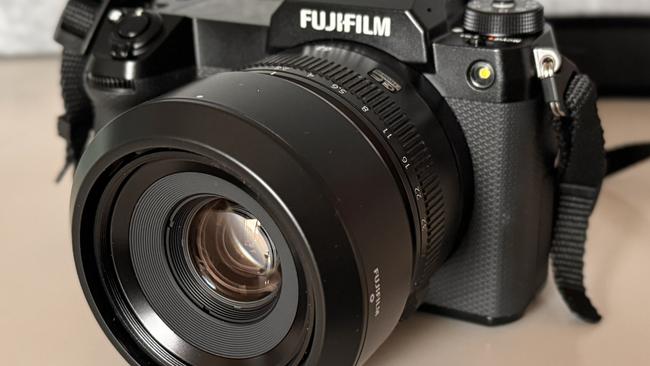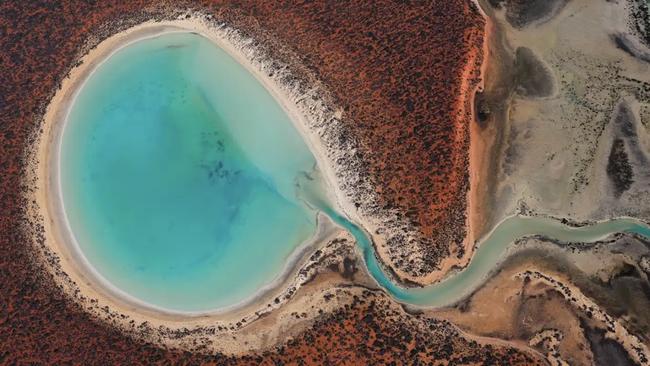Fujifilm’s biggest camera comes with a lot of features, but is it enough?
Fujifilm has packed in a range of new features in its latest camera, including AI-enhanced focusing, in a play to win back the smartphone photographers.

When Fujifilm’s latest medium format beast of a camera arrived on my doorstep, in a secure case with two combination locks, I felt a moment of regression.
I loved big sensor cameras. For years I used a Canon 5D Mk II, which is a wonderful full frame camera that was innovative in many ways. It was Canon’s first EOS model to feature video recording, which was so good it was used to film certain action sequences in Captain America: The First Avenger.
It was also heavy, weighing almost a kilogram. Add a full-frame zoom lens and it almost doubled the weight, prompting you to make a beeline to your nearest chiropractor.
Which is why five years ago, I switched to Olympus’s OMD micro four-thirds system. Olympus cameras appeared to defy the laws of physics, with their images rendering a certain way that gave more pop to a full-frame sensor, while being kinder to your neck and back.
You don’t have the razor thin depth of field but with the launch of Zuiko’s f/1.2 ranges of lenses, you can get pretty close. Then there are the gorgeous Panasonic Leica lenses. But now smartphone cameras have advanced so much that the make the Olympus seem cumbersome.
So would Fujifilm’s mighty GFX100S II make me fall in love with larger sensors again? Yes and no.
The camera is a whisker lighter than the old Canon 5D, coming in at 883g. It also fits in the hand nicely, which has been a criticism of Olympus’s em-10 and em-5 cameras (which have since been rebranded OM System after it sold its camera division to Japan Industrial Partners in 2020).
The first thing that struck me was how intelligent big box cameras have become. When the 5D MkII was released, photographers bemoaned its focusing system. It was slow and unpredictable action shots - such as fast moving kids - were easily missed.
The big Fujifilm had face and eye detection that even worked side-on. I tried this on my two-year-old son, who rarely sits still and it didn’t disappoint. Fujifilm says it has achieved this thanks to artificial intelligence, meaning its cameras can now detect animals, birds, cars, motorcycles, cars, insects - toddlers - you name it.
Coupled with a 102MP sensor - pictures of my son could be blown up to feature on Time Square billboards. But in everyday use, I think we’re at the point of diminishing returns with megapixels. The more than are crammed onto a sensor, the smaller the pixels are, meaning they capture less light, which is kind of the whole point of photography.
I used a GF 63mm F/2.8 lens for my test shots, which gave a full frame equivalent of 50mm. The pictures I took appeared cinematic - as you would expect with a sensor that’s 1.7 times larger than 35mm format.
But the camera had one flaw, which rendered certain images fuzzy. It’s automatic ISO wasn’t easily accessible, so much so that I thought the Fujifilm had no need for such automation on a camera of this calibre. I suspected this is because with a price tag at $8,699 - body only - this is aimed squarely at the pro market, and professionals don’t need automatic features.
But Jay Dickman - a professional photographer who also made the switch to Olympus’s smaller sensor cameras - is a big fan of auto ISO. It’s one less thing to worry about in the quest to get a great shot. (Fujifilm’s PR later contacted me after publication to say the GFX100S II did indeed have automatic ISO and even offered tech support. Pity. I had already sent the camera back).

Fujifilm says it has improved the pixel structure to boost its new sensor’s “saturated electrons”. What this means is it allows ISO80 as a standard sensitivity. “When the sensor sensitivity is set at ISO80, the camera can capture images at higher dynamic range and lower noise than with the previous model,” Fujifilm says.
The in body image stabilisation has also been improved, achieving a maximum of eight-stop, 5 five-axis performance, which Fujifilm says is the best in its series.
But in the early morning sun, with ISO set at even 100, the pictures of my son were slightly blurred. Of course, with the right ISO set, the pictures were stunning.
For extra fun, the camera also comes with a range of film simulation modes, allowing photographers to experiment with replicating the glory days of Fujifilm Velvia, Provia and other film stock. In the film era, I preferred Fujifilm over Kodak for its richer colours, and the GFX100S II does a good job of recreating the classic film rolls.
This is clearly a niche product that will be cumbersome and unnecessary for most photographers, including travel photography where travelling light and capturing spontaneity is key. But for those who are looking to create extra pop and put the time into their shots to capture rich detail, this is a superb tool.
More Coverage








To join the conversation, please log in. Don't have an account? Register
Join the conversation, you are commenting as Logout